3DPrint.com | The Voice of 3D Printing / Additive Manufacturing |
- 3D Printing Webinar and Event Roundup: June 19, 2022
- 3D Printing News Briefs, June 18, 2022: Awards, Standards, Research, & More
- Essentium Materials & High-Speed 3D Printing Used to Develop Drones to Fight Wildfires
- Velo3D Announces Q3 Release for Its Largest Volume 3D Printer Ever
- EPlus3D Customer 3D Prints Metal Cochlear Hearing Aids
- Australian Teen Accused of Manufacturing Fully Functional 3D Printed Firearm
- Amnovis and BAAT Medical Collaborate to Make 3D Printed Medical Devices
| 3D Printing Webinar and Event Roundup: June 19, 2022 Posted: 19 Jun 2022 05:30 AM PDT It’s another busy week of events and webinars coming up, starting with the AM Industry Summit in Long Beach. 3D Delta Week and the Silicone Expo are also taking place, and Velo3D takes its Seeing is Believing tour to Germany and Japan, while Stratasys continues to travel the U.S. with its Experience Stratasys tour. Webinars will cover metal 3D printing, 3D printing Hollywood props, Materialise Magics software, and more. June 18 – 21: ASME Annual MeetingFirst up, ASME is holdings its Annual Meeting in Scottsdale, Arizona; it started yesterday and ends on Tuesday, June 21st. Held at the Fairmount Scottsdale Princess, the meeting is a way to celebrate the major developments of members and honor outstanding contributors. A few special events will take place, including a Ralph Coats Roe lecture on Sunday, followed by the opening reception that night. The business meeting will be on Monday afternoon, and that night, the ASME Leadership Celebration will be held.
If you’re an ASME member, you can register for the Annual Meeting here. June 20 – 22: AM Industry SummitIf you’re in Long Beach, California this week, you don’t want to miss ASME’s AM Industry Summit, June 20-22. This event, created by engineers for engineers, is a hybrid one, so you can attend virtually as well. Focused on leveraging 3D printing capabilities within the aerospace and energy industries, the conference includes three days of technical sessions and keynotes across three tracks, a hands-on Technology Showcase, and an exhibitor hall. Attendees will have the chance to network with hundreds of cross-industry AM engineers, manufacturers, product designers, and technology professionals about everything from materials to quality and processes.
You can register for the summit here. June 20, 21, & 23: Velo3D’s Seeing is Believing in Japan & GermanyThis week, Velo3D is bringing its Seeing is Believing Roadshow to Japan and Germany. On Monday, June 20th, the tour goes to Nagoya, Japan, and then to Augsburg, Germany on the 21st. On the 23rd, there will be two sessions in Tokyo. These tours are a great opportunity for visitors to learn how Velo3D's end-to-end AM solution is pushing the boundaries of what the technology can achieve in important industries like aviation, space, oil & gas, and energy. The presentations will highlight Velo3D’s process all the way from design and printing on the Sapphire XC system to quality assurance and post-processing, and attendees will get to see real-world examples of parts printed by customers.
June 20, 21, 23, & 24: The Experience Stratasys Tour ContinuesThis week, Stratasys continues its Experience Tour in the Midwest, starting at Pinstripes in Oak Brook, Illinois on June 20th. The tour moves on to CATI HQ in Buffalo Grove, IL on the 21st, and then moves on to Indiana. On June 23rd, Stratasys will be at the Boathouse Restaurant in Winona Lake, IN, and then at Upland Brewing in Columbus, IN on the 24th. CATI will be hosting all four of these stops.
You can register for the Stratasys Experience Tour here. Stay tuned for more dates and locations in the future! June 20 – 24: 3D Delta Week (3DDW)Next up, from June 20-24, the first edition of the 3D Delta Week (3DDW) events series is taking place in the Benelux (Delta) region, specifically Belgium and the Netherlands. Organized by Brainport Eindhoven, Flam3D, Mikrocentrum, and Jakajima, the week is meant to be immersed in 3D manufacturing, including PLM, software, VR, 3D printing, model-based definition, VR, and more. According to the founders, the Benelux Delta is “a top region in terms of 3D printing,” with many promising startups and lots of academic and applied research going on, but the region’s AM ecosystem needs a better podium. 3D Delta Week involves several 3D manufacturing-centric events, including Additive Manufacturing R&D Day, a masterclass in scalable production for high-volume AM healthcare applications, the Materialise Open House: VIP Day, and the 3D Delta Dinner, and attendees can put together their own program.
June 21 – 22: HI-AM ConferenceThe 5th annual gathering of the NSERC Network for Holistic Innovation in Additive Manufacturing will be held from June 21-22 in the form of the HI-AM Conference, the only academic conference in Canada that’s focused solely on metal 3D printing. Co-hosted by McGill University and the University of Waterloo, HI-AM 2022 will be held in Montréal and welcome hundreds of AM experts and decision-makers from research institutes and academia, government, and industry to disseminate and discuss AM research results with HI-AM Network members and the scientific community. The main conference features will be keynote speeches, oral research presentations, and poster presentations
You can register for HI-AM 2022 here. June 21 – 23: Silicone Expo USAIf you’re part of the manufacturing or extended silicone supply chain of elastomers, fluids, resins, or gels, you don’t want to miss Silicone Expo USA, taking place from June 21-23 at Huntington Place in Detroit. This free, one-stop-shop for all things silicone will feature over 100 exhibitors displaying a range of services and products that support silicone applications in many fields, including automotive and medical, in addition to more than 28 sessions and over 35 speakers. The two track conference and trade show will also offer networking opportunities, international exhibitors, thought leadership discussions, the chance to learn the latest industry developments, and more.
You can register for the expo here. June 21 – 23: SPEE3D at CSAT & LSAATThe Cold Spray Action Team (CSAT) 2022 meeting is delivering a two-day hybrid session on June 21st and 22nd, while the inaugural Large Scale Additive Action Team (LSAAT) conference meeting, which is an in-person extension of CSAT 2022, will be on the 23rd, and SPEE3D will be at both of them. The theme of CSAT 2022, which will be held both virtually and at the DCU Center in Massachusetts, is “Cold Spray Additive Manufacturing or CSAM,” and will feature several topics, including machine learning, feedstock powders, non-destructive testing, cold spray at the point of need, and, of course, 3D printing. LSAAT 2022 will be at nearby Polar Park, and offer a community platform to discuss large format Solid-State and Direct Energy Deposition (DED) AM processes like Laser, Electron Beam and Plasma, Wire Arc, Friction Stir, and Cold Spray.
You can register for the CSAT + LSAAT 2022 Action Team Meetings here. June 21: Tools to Implement AM with GE AdditiveAt 10 am EST on Tuesday the 21st, GE Additive is holding a webinar on “Beyond the Machine: Tools Needed to Successfully Implement Metal Additive.” The presenter, GE Additive Project Manager Halima Iqbal, will look into the available ancillaries for achieving success in metal AM, and also introduce the available capability packages for the company’s M2 Series 5 DMLM printer, which can be customized to a customer’s specific needs.
You can register for the webinar here. June 22 & 23: Materialise Magics Training in the UKMaterialise offers training courses throughout the year, both online and in-person around the world. This Wednesday the 22nd, a one-day Magics Update training course will be offered in Bangalore, India, and another one will be held in London on Thursday the 23rd. Attendees will get an update on all the latest features of Magics 26, and learn how to optimize their workflow with the new Part and Platform scenes, how to improve the accuracy of editing operations by introducing BREP functionalities during data preparation, how to use the Sinter Module with fixed height supports for metal binder jetting and EBM, and more.
June 22: Nexa3D Live at HQIf you’ve ever wanted to see the inner workings of Nexa3D, you’re in luck! At 12 pm EST (9 am PT) this Wednesday, June 22nd, you can virtually visit the team at Nexa3D’s headquarters in Ventura, California. Sarah Goehrke, Senior Director, Strategic Communications and Ecosystems, and Avi Reichental, Co-Founder, Chairman, and CEO, will take you on a live visit for a look around the company’s offices, NextFactory, and its new Customer Success Center.
June 23: 3D Printing Hollywood Props ultraFASTSpeaking of Nexa3D, it’s joining ASME this Thursday, June 23rd, at 1 pm EST to discuss how to make “Hollywood Props with ultraFAST Desktop 3D Printing.” Nexa3D’s Mike Currie will talk with Rob Wiggins, a 3D designer and Hollywood prop maker, about how Nexa3D’s ultraFAST AM technology is used in Hollywood to increase throughput and manufacture accurate one-off parts fast and at less cost, how Wiggins designs and produces full-scale props and characters with 3D printing, and the prop maker’s recent discovery of how 3rd generation resin 3D printers can help him print projects in just hours, using a variety of performance materials.
You can register for the webinar here. June 23: Stratasys Talks Large Geometry Prints with DLPAlso at 1 pm EST on the 23rd, Stratasys will hold its latest webinar, “Overcoming Large Geometry Challenges in DLP 3D Printing.” Marshall Ling, Process R&D Manager at Stratasys, will teach attendees how a programmable print process allows for new applications that were previously nearly impossible due to the inherent challenges of DLP. You’ll also get to see real-world examples that show how the Origin One printer can produce advanced geometries, like smaller densely-nested parts or solid molds.
You can register for the webinar here. June 23: Nondestructive Evaluation Services with America MakesFrom 2-3 pm EST on the 23rd, America Makes is holding a TRX Webinar called “Good Vibrations: Process Compensated Resonance Testing for Additive Manufacturing Inspection.” New Mexico-based Vibrant Corporation provides nondestructive evaluation (NDE) services to aerospace, automotive, and power generation maintainers and manufacturers, using a whole-field Process Compensated Resonance Testing (PCRT) inspection to scan a component’s resonance frequencies; then, the data is analyzed with machine learning and statistical analysis tools. Vibrant uses PCRT for parts with traditional forms of manufacturing, as well as additive, and parts with structural flaws will have a different resonance signature. During this webinar, Vibrant will give technical background on PCRT, discuss its work in the America Makes Maturation of Advanced Manufacturing for Low-Cost Sustainment (MAMLS) Program, and provide examples of PCRT applications for additive manufacturing.
You can register for the webinar here. June 24: TechBlick Innovations Festival for ElectronicsFinally, TechBlick, the home of additive electronics, is holding a one-day, virtual Innovations Festival on Friday, June 24th, about Printed, Hybrid, 3D, InMold, and Textile Electronics. The global audience will enjoy more than 55 live exhibitors and 42 speakers, all focused on major electronics advances from around the globe. Topics will include everything from e-textiles, smart packaging, and printed sensors and displays to nano-scale wafer printing, printed batteries and hybrid circuits, perovskites, additively manufactured electronics (AME), and more.
You can register for the festival here. Do you have news to share about any future webinars or virtual and live events? Please let us know! The post 3D Printing Webinar and Event Roundup: June 19, 2022 appeared first on 3DPrint.com | The Voice of 3D Printing / Additive Manufacturing. |
| 3D Printing News Briefs, June 18, 2022: Awards, Standards, Research, & More Posted: 18 Jun 2022 05:30 AM PDT We’re starting off with some awards news in today’s 3D Printing News Briefs, as Additive Industries and 3DEO both won big at the TCT Awards. Also at TCT 3Sixty, Roboze finalized an agreement with Matsuura Machinery Ltd. Then, we’ll move on to standards, as ASTM International is working on a new one that will help with the use of powder bed fusion technology in medical device manufacturing. Speaking of the medical sector, Sanwa is bringing 3D printing to the field of dentistry in Japan. Finally, researchers in Australia are using intersecting light beams to control chemical reactions in a next-gen 3D printer. Additive Industries Win TCT Transport Application AwardAt the recent TCT Awards, Dutch metal 3D printer manufacturer Additive Industries won the TCT Transport Application Award for its work on a tooling nozzle for the Volkswagen Tiguan, in addition to being a finalist for the TCT Hardware Award – Non-polymer systems. Working with Additive Industries, Volkswagen achieved a 650% cost reduction in fabricating the nozzle, which was used for automated deposition of a rope in the vehicle’s chassis flange. The automaker used the MetalFAB metal 3D printer to manufacture the nozzle in a single piece, rather than two, out of 316L stainless steel – a cheaper option than its original titanium alloy. Also at the TCT Awards, which are produced by The TCT Group in conjunction with the TCT 3Sixty additive manufacturing event in Birmingham, high-volume metal 3D printing company 3DEO won the TCT Consumer Product Application Award. The company, which launched its new Saffron platform and patented Intelligent Layering technology earlier this year, won for a 3D printed production razor it manufactured for Blackland Razors. The double-edged safety razor, called the Era, was 3D printed out of stainless steel, and is fully customizable. Roboze & Matsuura Machinery Finalize AgreementThe awards aren’t all that happened at the recent TCT 3Sixty. At the show, Roboze announced that it had finalized an agreement with Matsuura Machinery Ltd to be its representative in the UK. Matsuura offers OEMs, subcontractors, and SMEs with fully engineered manufacturing processes, like automated multi-axes CNC machining solutions and metal and plastic 3D printers. Now, Matsuura has increased its 3D printer portfolio by adding the large-format ARGO 500 by Roboze, its industrial super polymer system. The printer will be on display in Matsuura’s show room in Coalville.
New PBF Standard Guiding Medical Device ManufacturersASTM International has a new standard, developed by its additive manufacturing F42 committee, which will offer guidance to medical device manufacturers about reusing powder in powder bed fusion AM processes. The new F3456 standard explains what ASTM refers to as the “seven broad reuse schema” that will offer manufacturers pertinent information for regulatory bodies that want a better understanding of how powder reuse schemes can affect the performance of medical devices. This is the actually the first standard developed by the F42 subcommittee on medical and biological standards.
Japanese Sanwa Dental Adopting AM TechnologyTokyo-based Sanwa Dental is bringing 3D printing to dentistry in Japan, as it’s announced the successful adoption of additive manufacturing in its Thailand dental laboratory. Sanwa believes that if the Japanese dental industry witnesses more widespread adoption of the technology, more patients would have easier access to high-quality dentures, implants, and other dental applications, so it’s leading the way in expanding the use of the technology in the region. The new printer Sanwa has installed was supplied by manufacturer Profeta, which is based in Nanjing Zijin, China and specializes in metal 3D printers for dental laboratories. Sanwa explained some of the many benefits of additive manufacturing, including creating designs that would be nearly impossible with normal casting methods. One example was designing and printing dentures with thinner, smaller metal frames, so that the wearer can speak more easily and clearly. Another benefit was reducing the number of steps in creating these titanium denture frames from ten to just five steps, which resulted in an increase in productivity. QUT Publishes Research on Next-Gen 3D PrintersA team of researchers from Queensland University of Technology (QUT) in Australia published a paper on their work using intersecting light beams to control chemical reactions in an advanced material that can 3D print entire layers, rather than single points at a time. According to Dr. Sarah Walden from the QUT Centre for Materials Science interdisciplinary research team, the precision that light offers in starting a reaction makes it a great tool for activating chemical processes. She explained that in this case, two differently colored light beams are used, causing a reaction only where the two intersect, and ARC Laureate Fellow Professor Christopher Barner-Kowollik noted that two such color-activated materials are very rare. He said that the team’s research was about proving how viable the ink is for the next generation of 3D printers.
The post 3D Printing News Briefs, June 18, 2022: Awards, Standards, Research, & More appeared first on 3DPrint.com | The Voice of 3D Printing / Additive Manufacturing. |
| Essentium Materials & High-Speed 3D Printing Used to Develop Drones to Fight Wildfires Posted: 17 Jun 2022 06:30 AM PDT Every year in the U.S., thousands of wildfires burn millions of acres of land, cause billions of dollars worth of damage, and often result in human casualties. Public safety technology developer Axle Box Innovations is helping enable and support the development of rugged 3D printed drones to manage and protect against dangerous wildfires, and it’s using Essentium AM technology to do it. While wildfires can occur naturally from lightning strikes and excessive heat from the sun, NC State professor Joseph Roise, who studies wildfire behavior and prevention, says that, unfortunately, the leading cause is “human carelessness,” such as leaving campfires unattended or discarding cigarettes where you shouldn’t. According to the Congressional Research Service (CRS), there were an average of 61,289 wildfires a year from 2012 to 2021, and as of June 1st, over 27,800 wildfires have impacted roughly 1.9 million acres nationwide in 2022.  Wildfires scorch the land in Malibu Creek State Park. As the wind picks up, the fire begins to spread faster. National Geographic photograph by David McNew. 3D printing has been used before to help detect and fight wildfires—exactly what Axle Box Innovations wants to do. By using Essentium’s High Speed Extrusion (HSE) 3D printing platform and high-performance, heat-resistant materials, the goal is to create lightweight yet structurally rugged drone bodies that can withstand the harsh conditions and high heat encountered when fighting fires.
Typical commercial drones aren’t robust enough to survive the extreme environment of a wildfire, but it can take a long time and a lot of money to develop bespoke, fire-safe drones for firefighting purposes. Using Essentium’s HSE platform, Axle Box hopes to get past these issues to create drones that can support first responders during wildfires.
Essentium’s HSE 3D printing platform offers the flexibility that Axle Box needs to ensure total design freedom and a faster drone development process. According to Essentium, Axle Box engineers can design new parts for the firefighting drones in a CAD program, print them, and deploy them within a few hours. The drone’s mid-body is printed using Essentium’s high-temperature HTN-CF25, a nylon material with a 25% carbon fiber-reinforced core. As a result, the company says it offers flexural and tensile strength, in addition to the highest heat deflection temperatures compared to PA 603-CF. In addition, Essentium’s carbon fiber-infused polyamide PA-CF filament is being used to print side covers for the drone, which are apparently “designed to fail before the mid-body without sacrificing thermal stability.” Thanks to the HSE 3D printing platform and Essentium’s tough materials, with their excellent mechanical and thermal properties, Axle Box’s lightweight, rugged drone platform was said to exceed expectations for functionality and high-speed impact during demo flight tests. Now, they should soon be able to deploy to capture real-time images for wildlife management teams on the ground. The post Essentium Materials & High-Speed 3D Printing Used to Develop Drones to Fight Wildfires appeared first on 3DPrint.com | The Voice of 3D Printing / Additive Manufacturing. |
| Velo3D Announces Q3 Release for Its Largest Volume 3D Printer Ever Posted: 17 Jun 2022 06:00 AM PDT Velo3D, one of the leading manufacturers of metal additive manufacturing (AM) systems for aerospace and space, has announced the release date for its new Sapphire XC 1MZ, which will be the largest volume printer the company produces. Currently, that title belongs to the original XC, released at the end of 2021. Velo3D says that it plans to deliver the first XC 1MZ systems to several aerospace companies sometime late in the third quarter of 2022. Quite straightforwardly, the "1M" in 1MZ refers to the fact that the machine can handle objects up to one meter in height. This gives it twice the build volume of the XC, as well as, according to the company, the largest build volume of any laser powder bed fusion (LPBF) printer on the market.
Given its niche as a leading provider of AM hardware in the aerospace and space sectors, specifically, it makes sense that Velo3D has started to focus on higher build volumes. Combining that with the company's emphasis on automated quality control should solidify its position in aerospace and space, and give it an advantage in any sector with high production volumes of large, heavy parts. This is especially significant, all the more so because the automotive industry continues to scale up its incorporation of AM into production lines. Honda is already a Velo3D customer, and the company will likely attract more automakers in the near future. This matters far beyond quarterly and yearly sales numbers, because of the specific juncture where the AM industry currently exists. The next few years could very well determine the fates of what have been, thus far, the industry's best-known companies, in particular on the hardware side. The hardware manufacturers that benefit from both the automotive and aerospace sectors' scale-up of AM usage will not only sell more machines and make more revenue, but will also be creating the standards for the entire ground floor of 3D printing’s use as a mass manufacturing technology. This has a multitude of implications for the role of those companies — like, potentially, Velo3D — in the industry's evolution, perhaps the most notable among those being control over the supply chains for AM materials. It's still of course hard to say to what extent large-scale industry will end up adopting AM, let alone which companies may have real staying power, aside from the ones that have already been around for decades. But I think you could certainly do worse in terms of a potential formula for general success than a combination of large build volumes and automated quality control. Images courtesy of Velo3D The post Velo3D Announces Q3 Release for Its Largest Volume 3D Printer Ever appeared first on 3DPrint.com | The Voice of 3D Printing / Additive Manufacturing. |
| EPlus3D Customer 3D Prints Metal Cochlear Hearing Aids Posted: 17 Jun 2022 05:30 AM PDT 3D printing is the dominant technology in the hearing aids industry. But so far not a lot of people have thought about cochlear hearing aids as a potential market. Cochlear implants are a series of devices working in concert that pick up sound, organise these sounds, turn them into electric impulses, and then interfaces with the auditory nerve. They can in part give someone a semblance of hearing in cases where it is absent or difficult. An Eplus3D customer used their EP-M260 powder bed fusion 3D printer to make Ti-6Al-4V titanium cochlear implant components. The EP-M260 is a 266 x 266 x 390 mm³ build volume, dual laser PBF system with optimised powder feeding and recycling. The ear was scanned and a design for a hearing aid shell was made based on that. Then the 3D printer makes a total of 150 of these shells per build with a 30μm layer thickness. The print job takes 30 hours, using 450 grammes of material at claimed total material cost of $400. The prints are then wire cut off the build plate, smoothed, and in ten minutes each of the shell’s support structures is removed. A batch then takes 30 hours to be polished. The company claims that each shell costs 25 yuan, which would be less than $4. The price makes this exciting enough in and of itself. Although we must remember that we don’t know the labor rate and depreciation the company used to get to this calculation. But, all in all, lovely number.
The company says that it can make 0.2 mm thin walls, making the implants half as thin as polymer alternatives. This makes the implant smaller. Eplus3D also says that the ¨matching success rate of the deep ear canal products is increased by 64%.¨ The internal hearing aid also has more space for receivers and the like. We usually think of 3D printed polymer replacing metal, but there could be other cases out there where 3D printed metal could replace polymers. It is notable that the wall thickness was the major reason why metal was chosen here. Larger internal volume is also a very important part of this, as it would really let companies do more inside of a similarly sized implant. Similar considerations could mean that for some wearables, headphones, and small electronic devices, metal 3D printing could be a real alternative. Assuming that Eplus3D can really make these shell components for less than $4 consistently, then the company could really expand what it could make. We’ve always been focused on high end applications at high cost, usually for high mix low volume manufacturing. We haven’t minded paying more for machines that worked well. We also didn’t mind paying more for powder if we wanted it to work well as well. But, now that we’re looking at more high volume applications, price is increasingly becoming more of an issue for us. New technologies such as Seurat or binder jet promise to replace power bed fusion by being cheaper. But, what if lower cost machines are really the answer? I’m a big fan of One Click Metal and other inexpensive powder bed companies. I really think that for a lot of applications, powder bed fusion could become much more cost competitive through lower-priced machines and materials pricing. There is still of course a place for high volume systems with high reliability for crucial parts, but there could also be a market out there for machines capable of making customised titanium hearing aid shells for $4. The post EPlus3D Customer 3D Prints Metal Cochlear Hearing Aids appeared first on 3DPrint.com | The Voice of 3D Printing / Additive Manufacturing. |
| Australian Teen Accused of Manufacturing Fully Functional 3D Printed Firearm Posted: 17 Jun 2022 05:00 AM PDT On Monday, Western Australia Detective Senior Sargent Blair Smith announced charges against an 18-year-old man for illegally manufacturing and possessing firearms. The teen is accused of using a 3D printer and readily accessible material to manufacture a fully functioning, untraceable so-called ghost gun, a privately made firearm without serial numbers that is increasingly cropping up in violent crimes. The 18-year-old man from Bayswater, in the Western Australian city of Perth, was charged with several firearm offenses after a search warrant was executed at his home on Slade Street. On June 3, 2022, detectives from the Western Australia Police Force's Drug and Firearm Squad, including Smith, arrived at the young man's home, where they located the fully-functioning 3D printed firearm (seen in the image below), along with a 3D printer, suppressor, ammunition, and a barrel manufacturing station. In addition, a number of gel blasters, also known as water pellets or splatter-ball guns, were also found during the search. 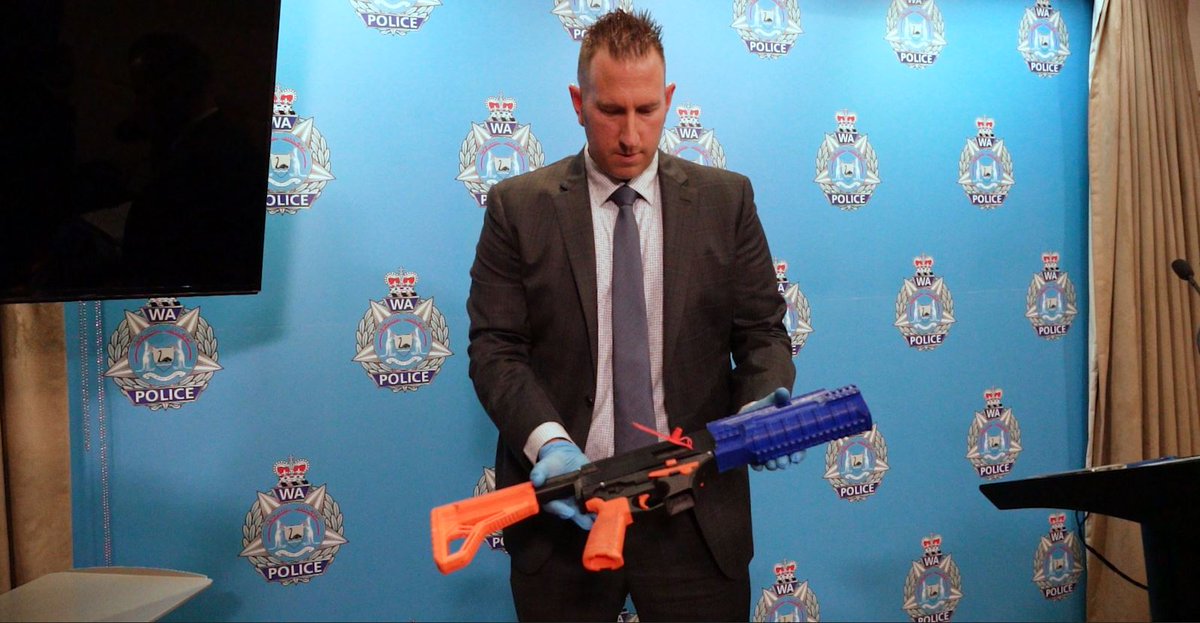 Australian detective with the 3D printed firearm seized from an 18-year-old man. Image courtesy of Western Australia Police Force via Twitter. Officials believe the man, who does not possess a valid firearms license, manufactured the weapon using a 3D printer and readily accessible materials. He is now facing eight charges, including unlicensed manufacture of firearms and ammunition, possession of prohibited weapons and a silencer, and is due to appear before the Perth Magistrates Court on June 20, 2022. During a press conference, Smith said that this is the first time a fully functional 3D printed firearm has been seized in Western Australia.
Now that the first 3D printed ghost gun has been discovered in the state, the Drug and Firearm Squad remains relentless in identifying anyone who will use a 3D printer to manufacture an unlicensed functional gun. Smith said his team would use available data to locate and prosecute any individual who prints these types of ghost guns with serious firearm offenses. Growing concernAlthough this may be the first offense of its kind in Western Australia, the country has already arrested at least 17 individuals for fabricating weapons with 3D printers, most of them in the last three years. Our own research on 3D printed gun arrests, published on June 8, 2022, revealed that Australia is one of the three countries with more 3D printed gun-related arrests worldwide, representing 17% of total arrests. For example, in June 2021, two men were arrested after investigators seized two 3D printed submachine guns during the National Anti-Gangs Squad operation targeting the manufacture and supply of prohibited firearms. Another high-profile case that same year involved the arrest of an alleged right-wing extremist accused of possessing a blueprint to 3D print a gun and making "significant preparations" to manufacture a firearm.  Western Australia Drug and Firearm Squad Detective Senior Sargent Blair Smith during the press conference. Image courtesy of Western Australia Police Force via Twitter. For some time, Australian authorities have warned that the potential use of 3D printers to make firearms severely threatened community safety. The New South Wales (NSW) State Crime Commands Drug and Firearms Squad even established Strike Force Tamerang in 2021 to investigate the increase of 3D printed firearms, firearm parts, and firearm blueprints imported and manufactured in the state. Since then, the initiative has resulted in several arrests, including a man in Sydney's western suburbs who was apprehended and charged after police located multiple unfinished 3D printed firearms, firearm parts, and other materials allegedly used to manufacture 3D printed ghost guns. 3D printed guns have become a major issue in other countries as well, particularly in the US and Canada, where, according to 3DPrint.com's research, there have been over 80 arrests combined. Blueprints for 3D printed guns are readily available online, and on the dark web, so gun regulators struggle to keep track of weapons. Governments are also trying to play catch up with 3D printed gun makers. In the US, the Biden Administration said it would introduce ghost gun reforms to the 3D printing industry, including "Final Rule 2021R-05F," which redefines firearm parts and bans the business of manufacturing the most accessible ghost guns. In Australia, using a 3D printer for manufacturing a firearm without an applicable license is a serious criminal offense that can carry a maximum penalty of 10 years. Furthermore, the maximum penalty can increase to 20 years if the individual is caught unlawfully manufacturing a pistol or prohibited firearm. In NSW, legislation has been passed that even prohibits any blueprints or digital files that can be used to manufacture weapons. That means if someone is caught possessing this type of file, they could face 14 years in prison. The post Australian Teen Accused of Manufacturing Fully Functional 3D Printed Firearm appeared first on 3DPrint.com | The Voice of 3D Printing / Additive Manufacturing. |
| Amnovis and BAAT Medical Collaborate to Make 3D Printed Medical Devices Posted: 17 Jun 2022 04:30 AM PDT Amnovis and BAAT Medical are partnering to quickly make medical devices together using 3D printing. The team can take a concept and bring it all the way through to engineering, manufacturing and approval. Amnovis is an ISO 13485 certified contract manufacturer, founded by former Layerwise and 3D Systems exec Peter Mercelis, while BAAT Medical is a 22-year-old company that specialises in the development, logistics and management of medical devices, helping companies turn ideas into FDA-approved products. BAAT has specialised so far in trauma and spinal fusion, making over 50,000 implants to date. The collaboration between the two firms will make it easier for medical device companies, doctors, inventors and startups to make their 3D printed device ideas come to life.
The team have a joint development roadmap for clients where they each contribute when their expertise is needed. They hope to shorten the time to market and offer more in-depth manufacturing, materials and development expertise than others. Ruben Wauthle (also ex-Layerwise), Amnovis CEO, said:
Gert Nijenbanning, Managing Director of BAAT Medical, said:
This is a very smart collaboration. There are a lot of approvals flying about at the moment and a lot of startups and large firms attempting to bring 3D printed orthopedic and trauma implants to market. But there are very few people with experience in characterizing materials, qualifying parts and manufacturing in 3D printing in general. There are fewer people still who can do these things for metal 3D printing processes. Throw in medical device manufacturing and the Venn diagram becomes even smaller. And those who do have that kind of experience will find it not much trouble to secure work with Stryker, J&J or some of the other firms working in this area. 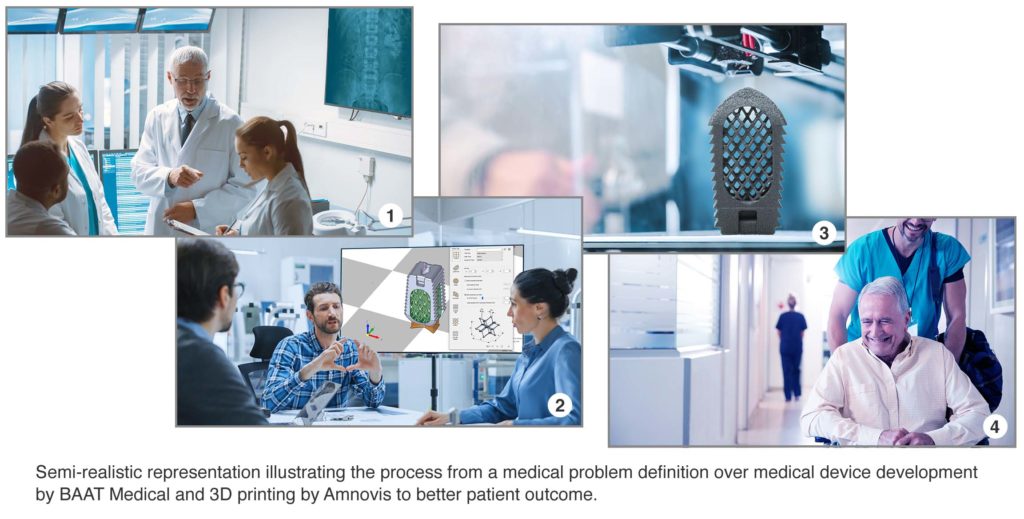 Hopefully the team will be availing themselves of the services of a graphic designer soon. There is a war for talent in 3D printing at the moment and the most difficult positions to fill are those of metal sales leaders, application engineers and true manufacturing experts. Letting people rent this valuable expertise is therefore a very valuable thing to do. Also, those who do have a track record in getting 3D printed products to market are usually kept around by incumbents because of their expertise and their use to competitors. Currently PrinterPrezz offers a one-stop shop to bring products to market, as do Precision ADM, Lincotek and SwissM4M. With a lot of potential not only in orthopaedics but also nascent areas such as trauma, any help will be sorely needed. I asked Erik Boelen, who works at 3D printed medical device consultancy Qas3d and has extensive experience with quality management in 3D printed medical devices, what he thought of the collaboration. He said that,
As Stryker and others seem to want to print millions of devices, this will whet the appetite of startups and other firms even more than is the case currently. 3D printed medical implants took 30 years of development to become successful, but we are at the dawn of a growth phase which will make it one of the largest and most profitable parts of our industry. The post Amnovis and BAAT Medical Collaborate to Make 3D Printed Medical Devices appeared first on 3DPrint.com | The Voice of 3D Printing / Additive Manufacturing. |
| You are subscribed to email updates from 3DPrint.com | The Voice of 3D Printing / Additive Manufacturing. To stop receiving these emails, you may unsubscribe now. | Email delivery powered by Google |
| Google, 1600 Amphitheatre Parkway, Mountain View, CA 94043, United States | |
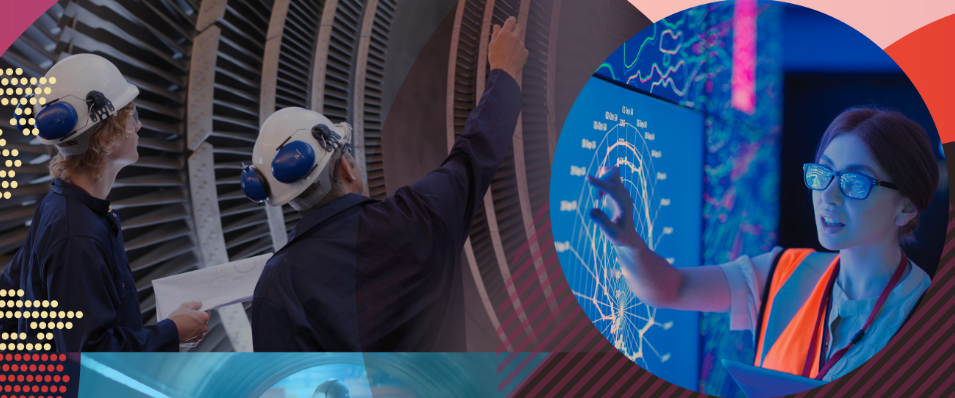

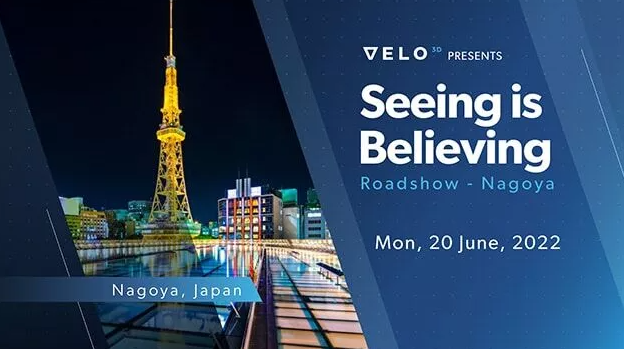

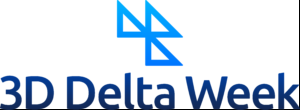
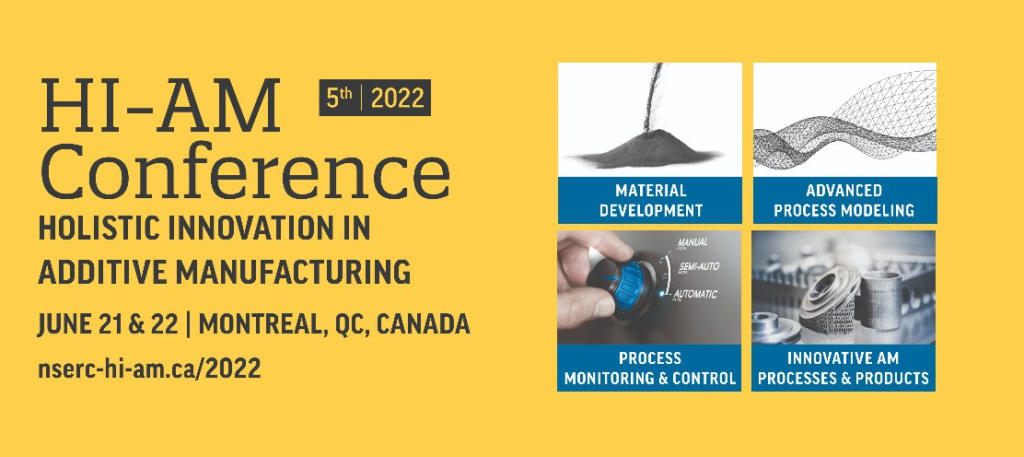
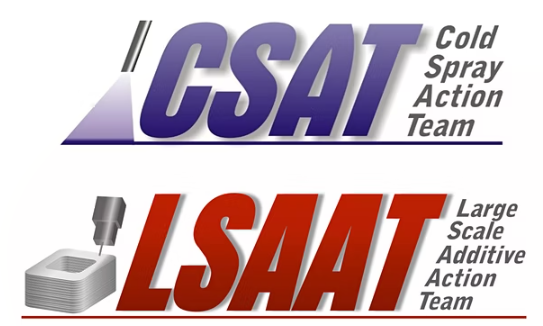

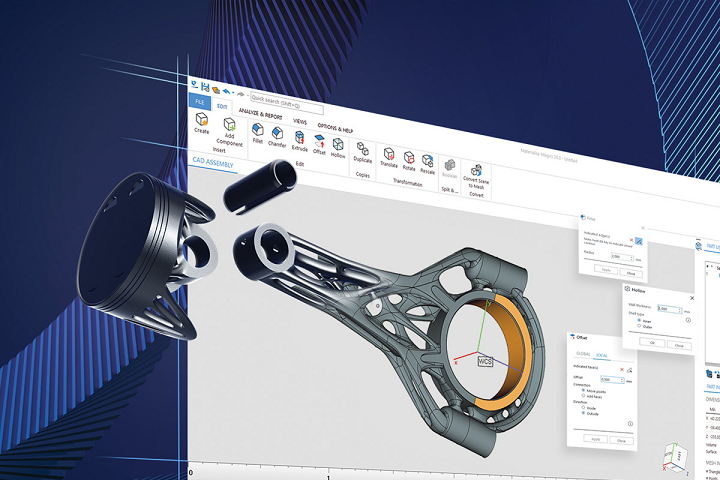
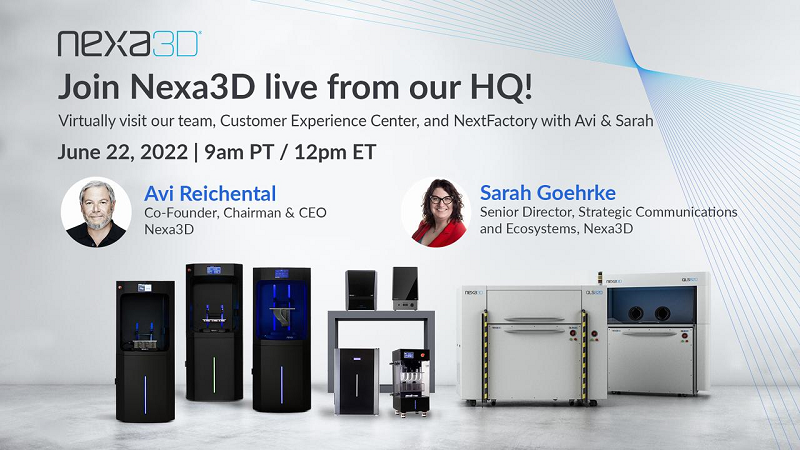
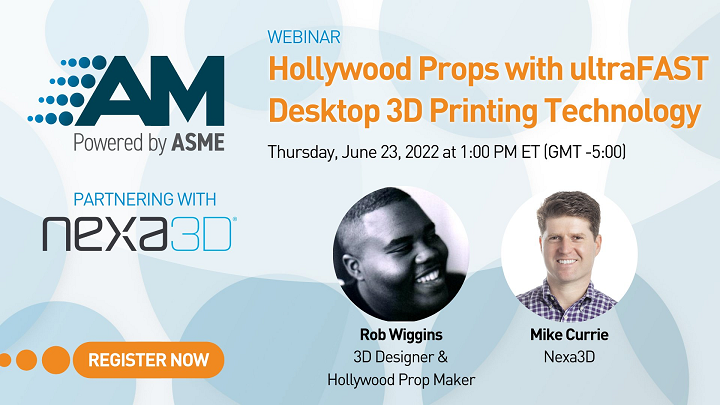
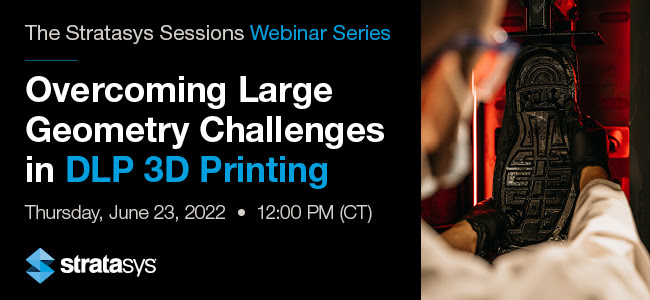
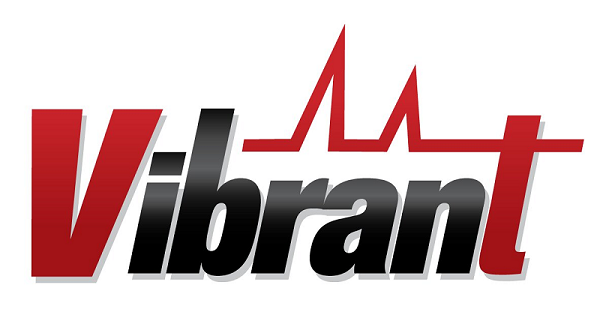

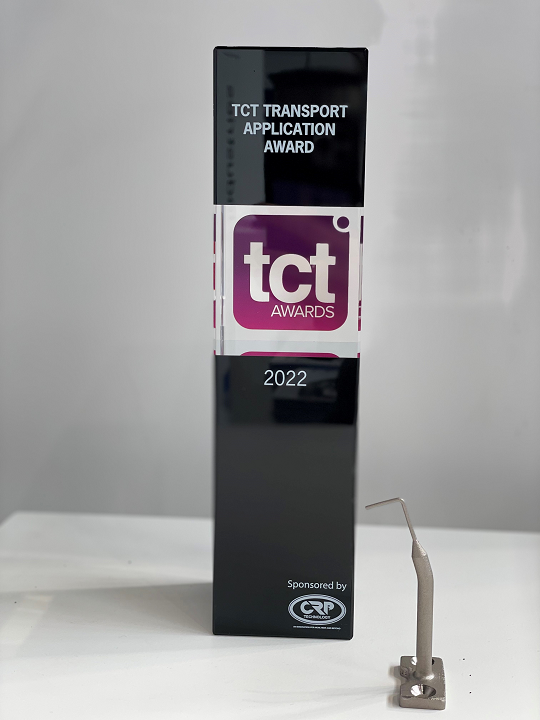
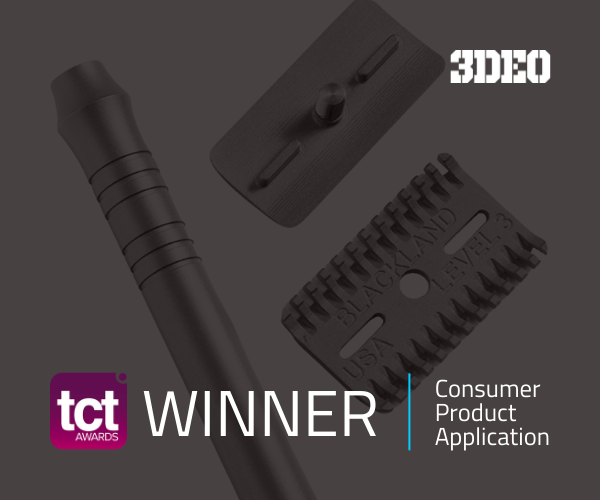
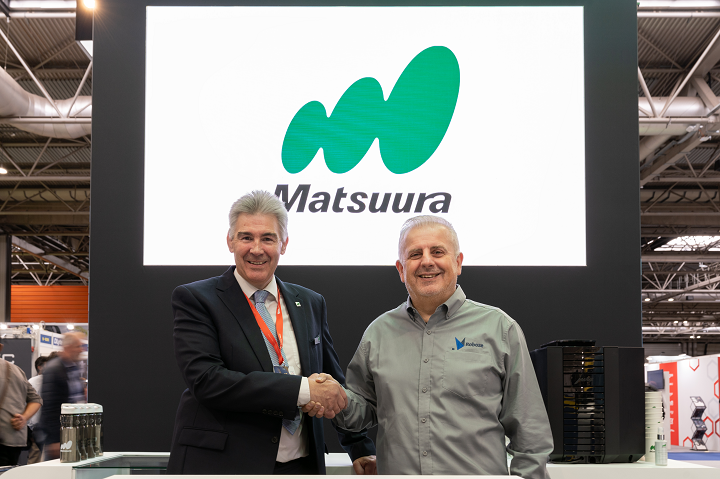

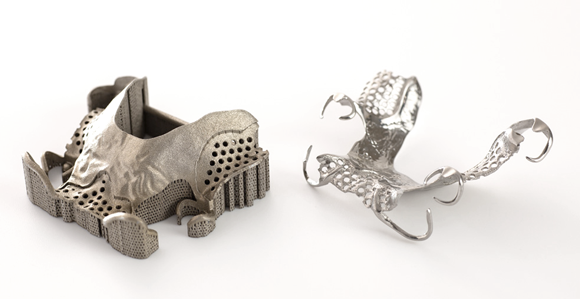
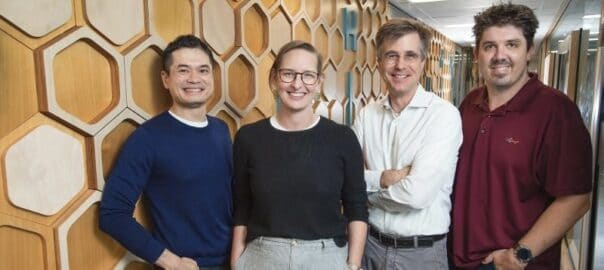

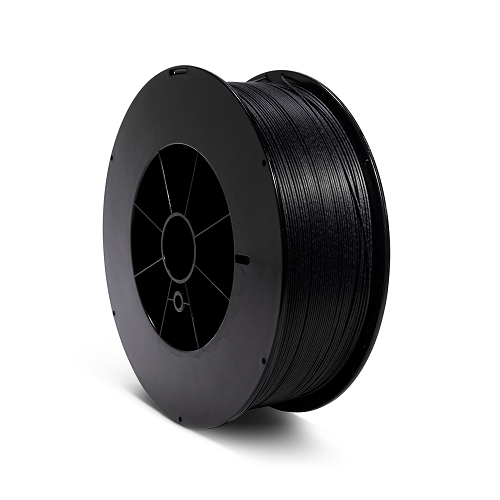
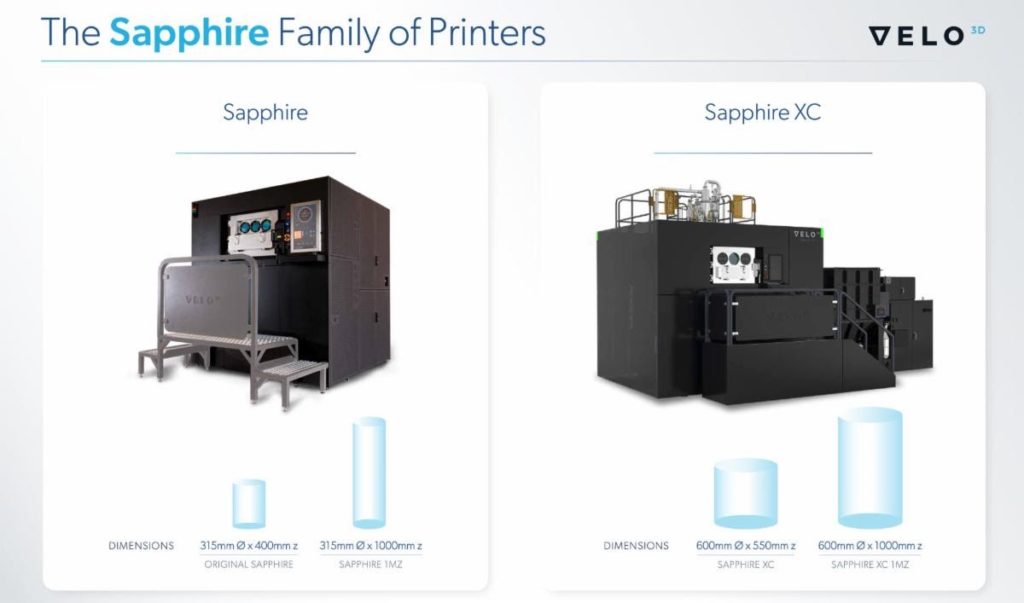
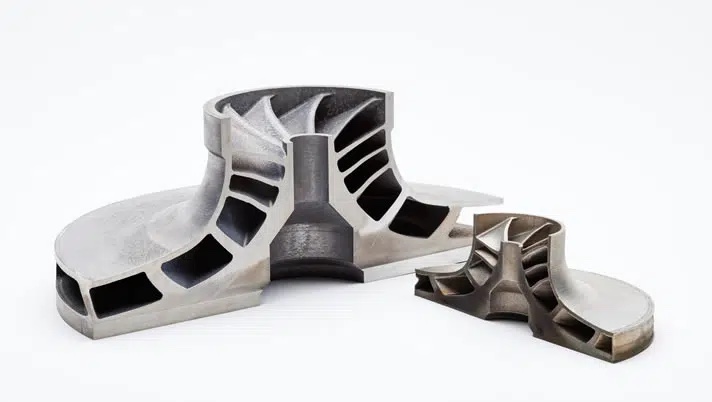
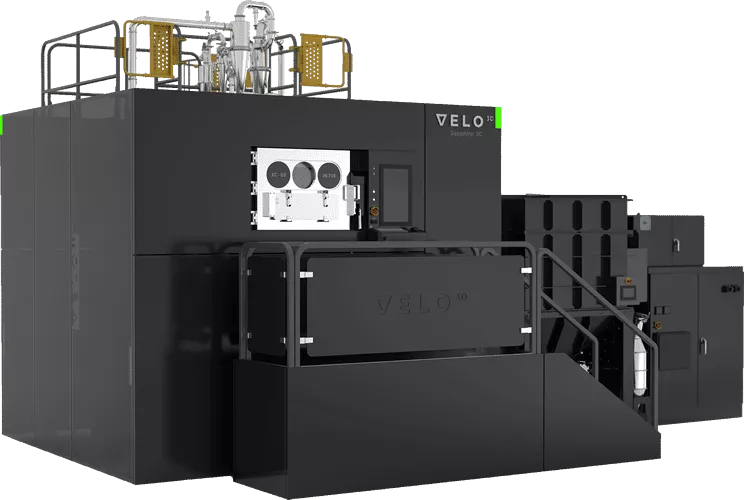



0 comments:
Post a Comment